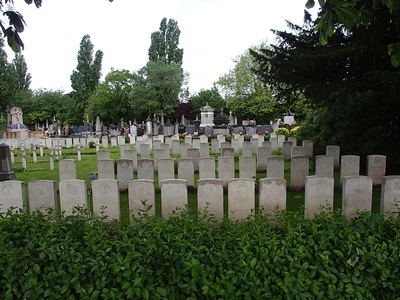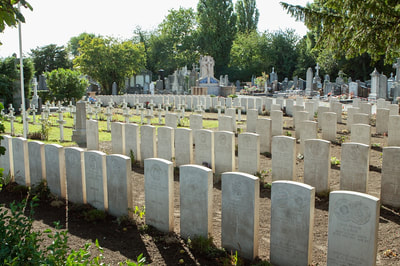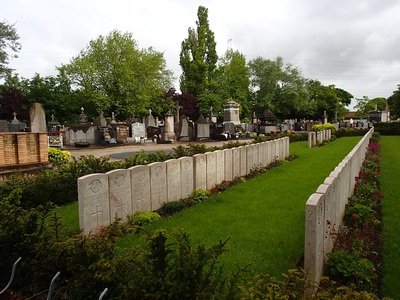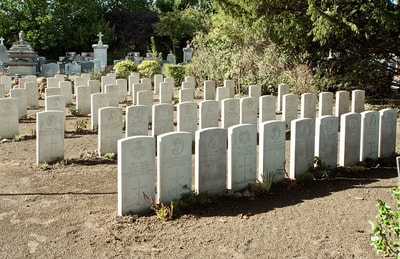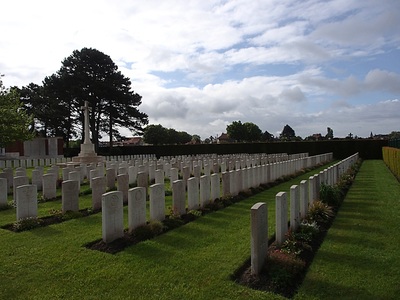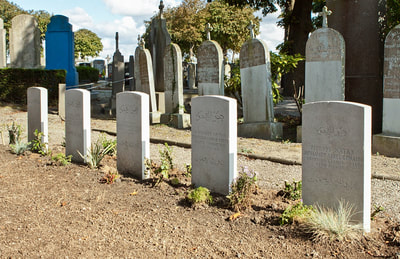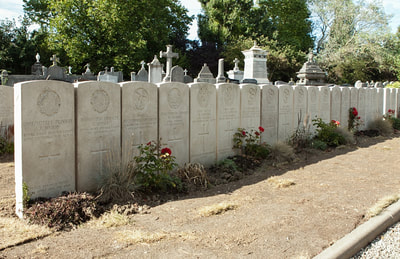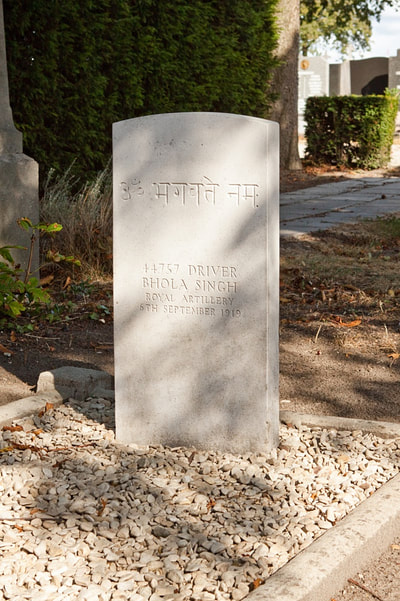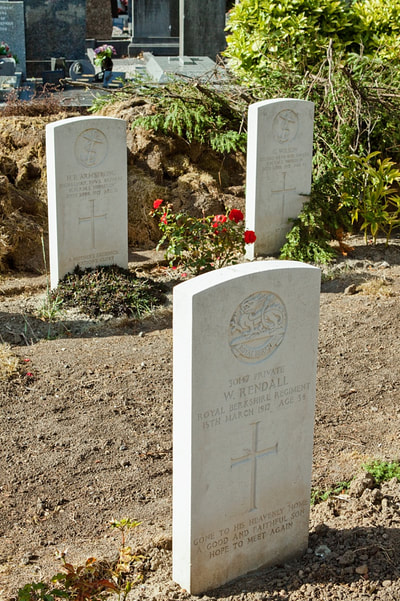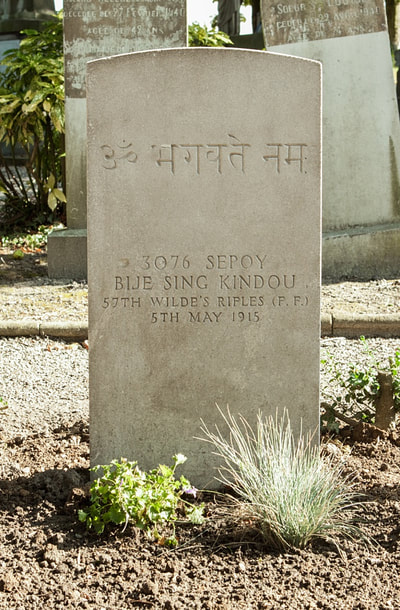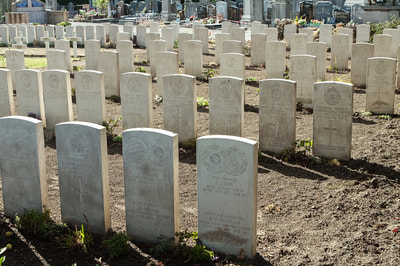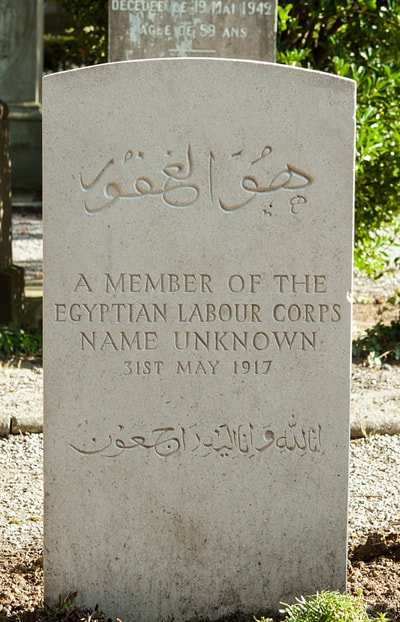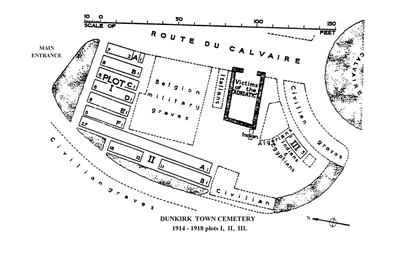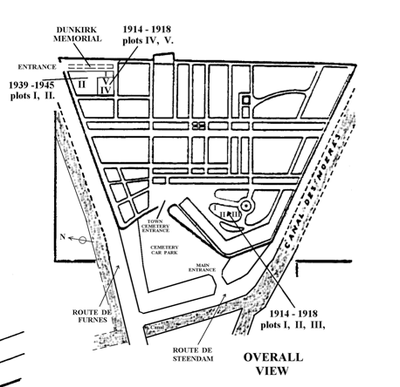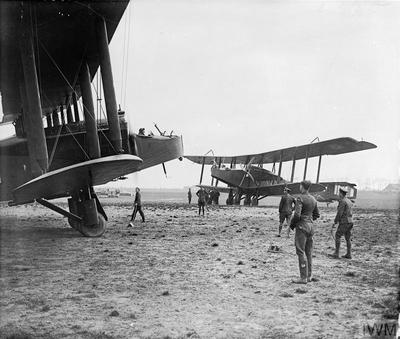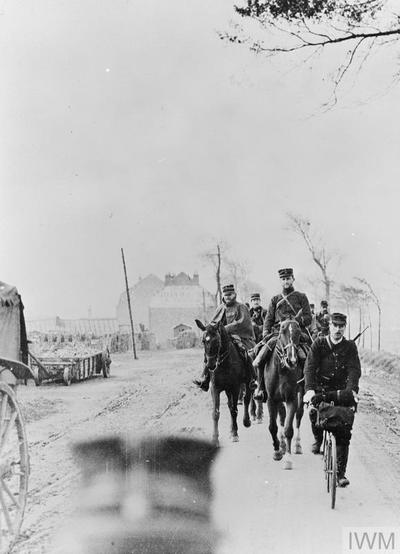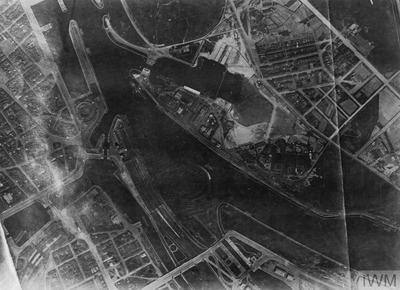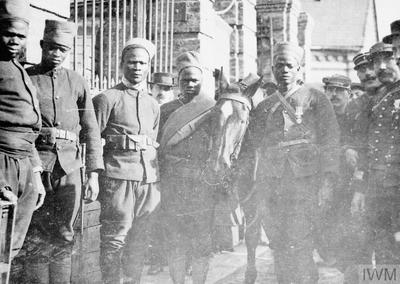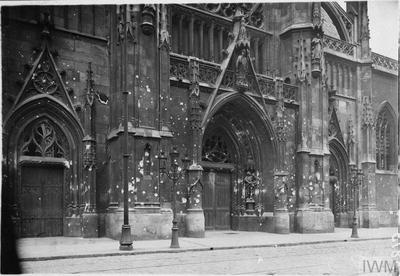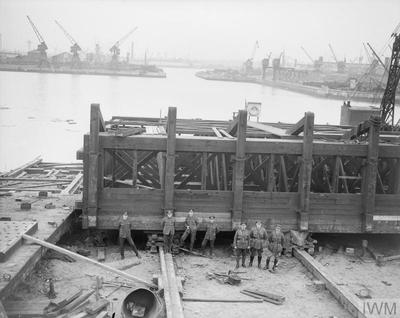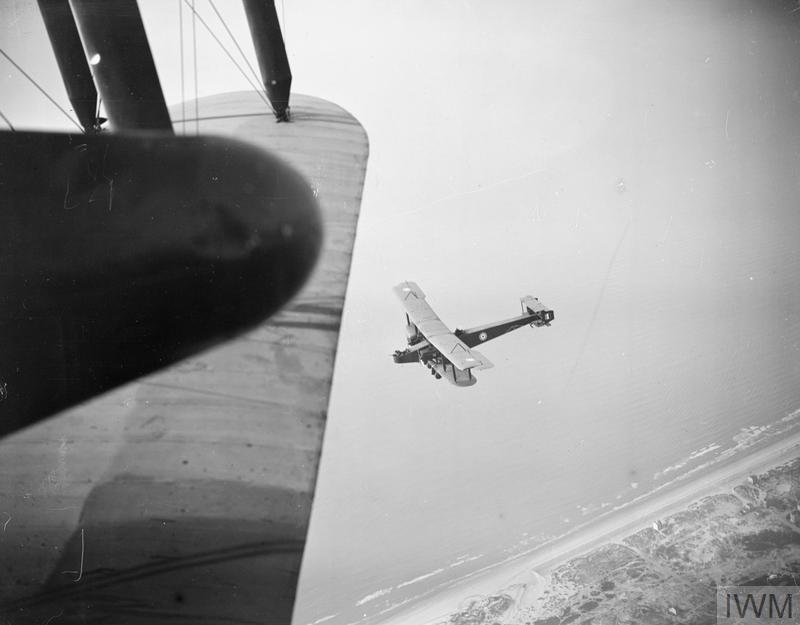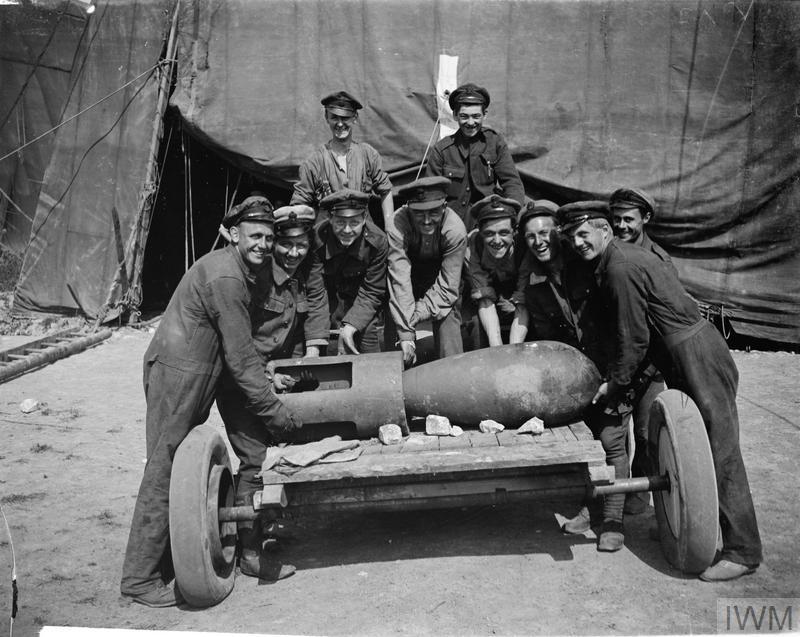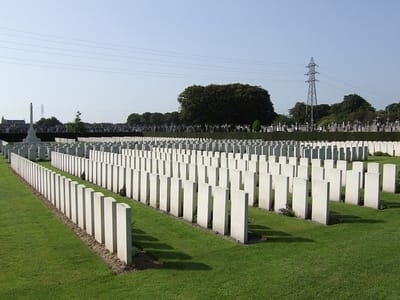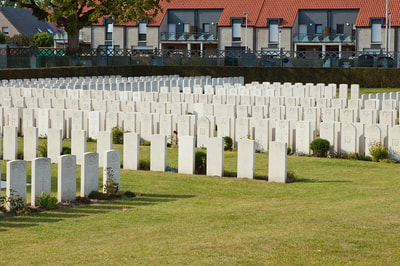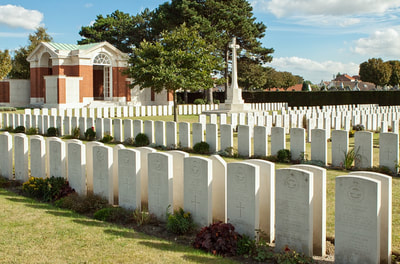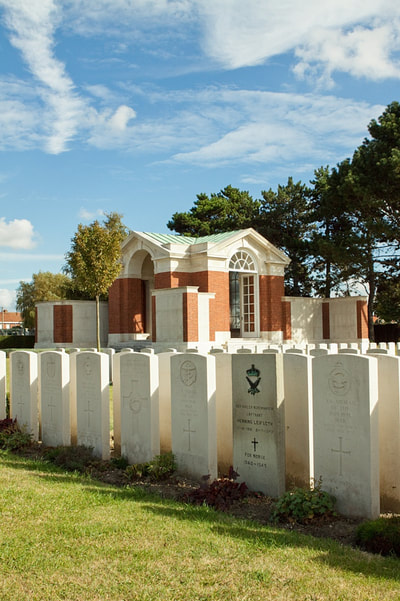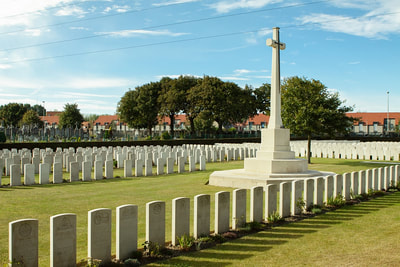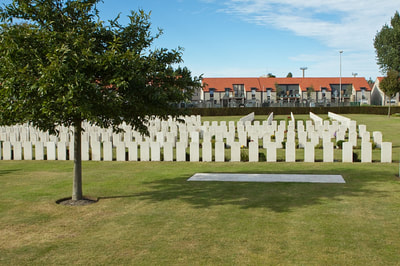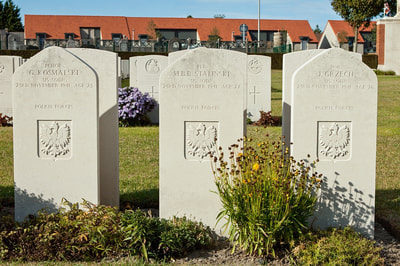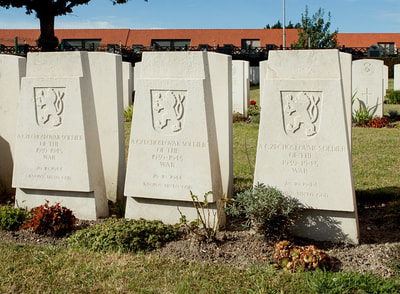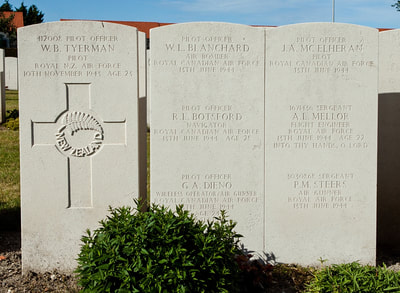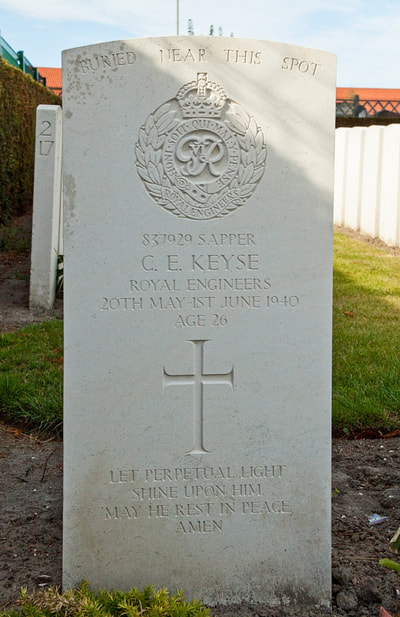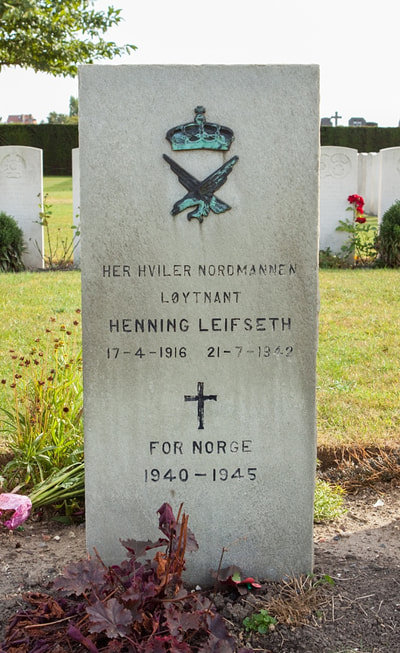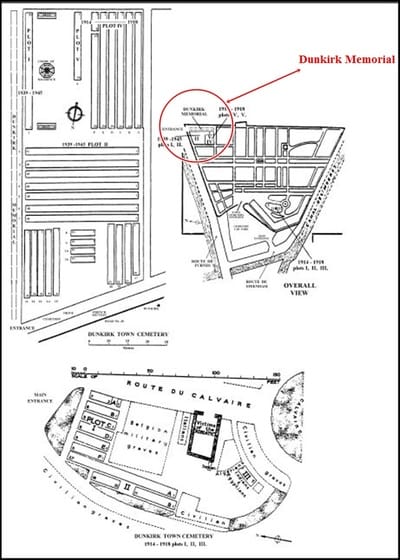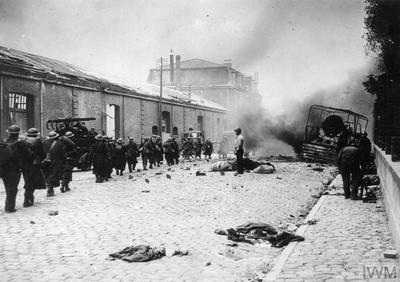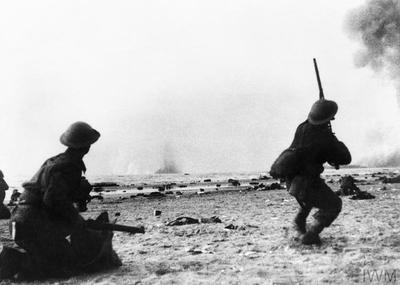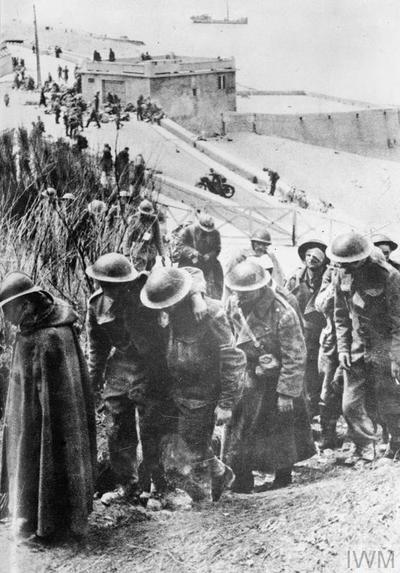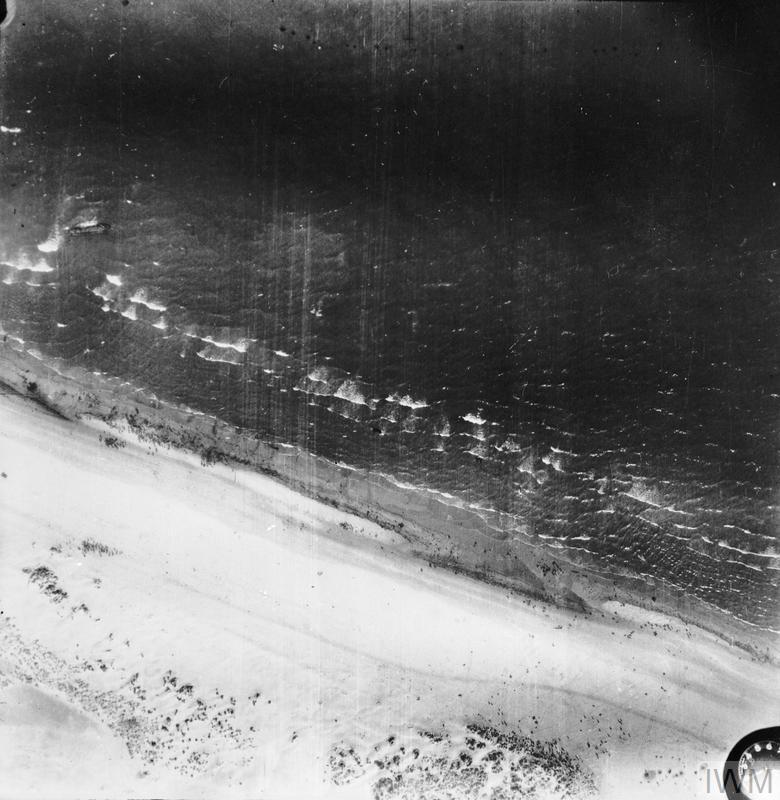DUNKIRK TOWN CEMETERY
Nord
France
Location Information
Dunkirk Town Cemetery is at the south-eastern corner of the town of Dunkirk, immediately south of the canal and on the road to Veurne (Furnes) in Belgium.
On entering the cemetery through the columns of the Dunkirk Memorial, two Commonwealth war graves sections will be seen: Plots IV and V from the First World War and Plots I and II from the Second World War.
There is also a further First World War section (Plots I, II and III) in the main part of the cemetery to the right of the main entrance.
Visiting Information
Wheelchair access is possible to this cemetery. There is a disabled parking space marked on the road immediately in front of the Dunkirk Memorial, and a slope has been built to allow wheelchair access from the pavement to the memorial and thus Plots IV and V from the First World War and Plots I and II from the Second World War in the cemetery.
Plots I, II and III from the First World War, in the main part of the cemetery, are accessible via the Civil Cemetery entrance.
Historical Information
Dunkirk witnessed the landing of the British Expeditionary Force in September and October 1914. Throughout the First World War it was a seaplane base and later an American Naval Air Service base. The town was also a French hospital centre and the 8th Canadian Stationary Hospital was there from November 1918 to April 1919. Although an estimated 7,500 shells and bombs fell on the town during the war, ship building and other port activities continued.
During the Second World War, Dunkirk was the scene of the historic evacuation of the British Expeditionary Force from France in May 1940.
DUNKIRK TOWN CEMETERY contains 460 Commonwealth burials of the First World War, ten of them unidentified. The graves are situated in Plots 1 to 3 in the public part of the cemetery to the right of the main entrance, and in Plots 4 and 5 of the Commonwealth War Graves section adjacent to the Dunkirk Memorial.
Of the 793 Second World War burials, 213 are unidentified and special memorials are erected to 58 soldiers known to be buried among them. These graves are in Plots 1 and 2 of the section by the Dunkirk Memorial. There are also Czech, Norwegian and Polish war graves within the Commonwealth section, and war graves of other nationalities will be found elsewhere within the cemetery.
The DUNKIRK MEMORIAL stands a the entrance to the Commonwealth War Graves section of Dunkirk Town Cemetery. It commemorates more than 4,500 casualties of the British Expeditionary Force who died in the campaign of 1939-40 and who have no known grave.
The memorial was designed by Philip Hepworth. The engraved glass panel depicting the evacuation was by John Hutton.
Dunkirk Town Cemetery is at the south-eastern corner of the town of Dunkirk, immediately south of the canal and on the road to Veurne (Furnes) in Belgium.
On entering the cemetery through the columns of the Dunkirk Memorial, two Commonwealth war graves sections will be seen: Plots IV and V from the First World War and Plots I and II from the Second World War.
There is also a further First World War section (Plots I, II and III) in the main part of the cemetery to the right of the main entrance.
Visiting Information
Wheelchair access is possible to this cemetery. There is a disabled parking space marked on the road immediately in front of the Dunkirk Memorial, and a slope has been built to allow wheelchair access from the pavement to the memorial and thus Plots IV and V from the First World War and Plots I and II from the Second World War in the cemetery.
Plots I, II and III from the First World War, in the main part of the cemetery, are accessible via the Civil Cemetery entrance.
Historical Information
Dunkirk witnessed the landing of the British Expeditionary Force in September and October 1914. Throughout the First World War it was a seaplane base and later an American Naval Air Service base. The town was also a French hospital centre and the 8th Canadian Stationary Hospital was there from November 1918 to April 1919. Although an estimated 7,500 shells and bombs fell on the town during the war, ship building and other port activities continued.
During the Second World War, Dunkirk was the scene of the historic evacuation of the British Expeditionary Force from France in May 1940.
DUNKIRK TOWN CEMETERY contains 460 Commonwealth burials of the First World War, ten of them unidentified. The graves are situated in Plots 1 to 3 in the public part of the cemetery to the right of the main entrance, and in Plots 4 and 5 of the Commonwealth War Graves section adjacent to the Dunkirk Memorial.
Of the 793 Second World War burials, 213 are unidentified and special memorials are erected to 58 soldiers known to be buried among them. These graves are in Plots 1 and 2 of the section by the Dunkirk Memorial. There are also Czech, Norwegian and Polish war graves within the Commonwealth section, and war graves of other nationalities will be found elsewhere within the cemetery.
The DUNKIRK MEMORIAL stands a the entrance to the Commonwealth War Graves section of Dunkirk Town Cemetery. It commemorates more than 4,500 casualties of the British Expeditionary Force who died in the campaign of 1939-40 and who have no known grave.
The memorial was designed by Philip Hepworth. The engraved glass panel depicting the evacuation was by John Hutton.
World War One
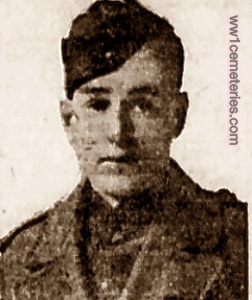
Second Lieutenant
Harold Frederick Allbutt
88th Sqdn. Royal Air Force
15th July 1918, aged 23.
Plot IV. C. 3.
Son of Charles Thomas and Lily Allbutt, of 1088, Corydon Avenue, Winnipeg, Canada.
The inscription on his headstone reads: "At the going down of the sun and in the morn we remember him."
Harold Frederick Allbutt
88th Sqdn. Royal Air Force
15th July 1918, aged 23.
Plot IV. C. 3.
Son of Charles Thomas and Lily Allbutt, of 1088, Corydon Avenue, Winnipeg, Canada.
The inscription on his headstone reads: "At the going down of the sun and in the morn we remember him."
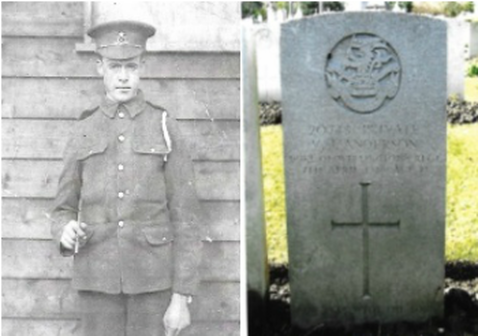
20743 Private
James Valentine Anderson
12th Bn. Duke of Wellington's (West Riding Regiment)
7th April 1916, aged 21.
Plot I. A. 4.
Son of James and Ada Anderson, of Little Bridgeford, Stafford.
Picture courtesy of his great nephew Mike Buckless
James Valentine Anderson
12th Bn. Duke of Wellington's (West Riding Regiment)
7th April 1916, aged 21.
Plot I. A. 4.
Son of James and Ada Anderson, of Little Bridgeford, Stafford.
Picture courtesy of his great nephew Mike Buckless

Lieutenant
Herbert William MacKarsie Cumming
204th Sqdn. Royal Air Force
5th September 1918, aged 20.
Plot IV. C. 15.
Son of Walter William and Elizabeth Cumming, of 113, Bedford Rd., Toronto, Canada. Born at Campbellford, Ontario.
The inscription on his headstone reads; "Greater love hath no man than this."
Herbert William MacKarsie Cumming
204th Sqdn. Royal Air Force
5th September 1918, aged 20.
Plot IV. C. 15.
Son of Walter William and Elizabeth Cumming, of 113, Bedford Rd., Toronto, Canada. Born at Campbellford, Ontario.
The inscription on his headstone reads; "Greater love hath no man than this."
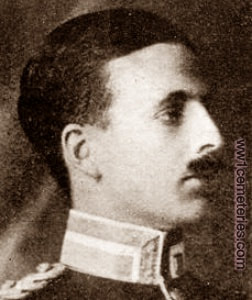
Brevet Major
George Hebden Raleigh, Mentioned in Despatches
4th Sqdn. Royal Flying Corps and Essex Regiment
20th January 1915, aged 36.
Plot I. A. 1.
Son of William Thorp Raleigh and Matilda Jane Raleigh, of Melbourne, Australia.
George Hebden Raleigh, Mentioned in Despatches
4th Sqdn. Royal Flying Corps and Essex Regiment
20th January 1915, aged 36.
Plot I. A. 1.
Son of William Thorp Raleigh and Matilda Jane Raleigh, of Melbourne, Australia.
World War Two
Pictures in gallery below © Werner Van Caneghem except first photograph
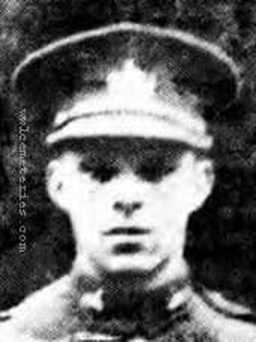
5183252 Serjeant
John Ralph Aldridge
5th Bn. Gloucestershire Regiment
29th May 1940, aged 19.
Plot 2. Row 15. Grave 21.
Son of Reginald Eugene and Gladys May Aldridge, of Gloucester.
John Ralph Aldridge
5th Bn. Gloucestershire Regiment
29th May 1940, aged 19.
Plot 2. Row 15. Grave 21.
Son of Reginald Eugene and Gladys May Aldridge, of Gloucester.
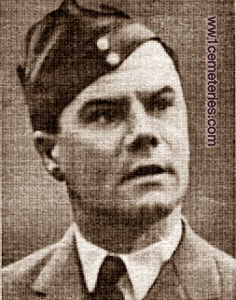
26010 Wing Commander
John Woodburn Gillan, DFC and Bar, AFC.
Royal Air Force
29th August 19141, aged 34.
Plot 2. Row 2. Grave 41.
Son of the Revd. David Hedley Gillan, and of Helen Gillan (nee Drummond), of Edinburgh.
The inscription on his headstone reads: "His dauntless spirit is alive for evermore."
John Woodburn Gillan, DFC and Bar, AFC.
Royal Air Force
29th August 19141, aged 34.
Plot 2. Row 2. Grave 41.
Son of the Revd. David Hedley Gillan, and of Helen Gillan (nee Drummond), of Edinburgh.
The inscription on his headstone reads: "His dauntless spirit is alive for evermore."
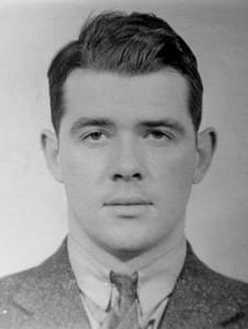
J/15024 Flight Lieutenant
John (Jack) Joseph Mooney
Royal Canadian Air Force, 121 (R.A.F.) Sqn.)
16th June 1942 aged 21.
Plot 2. Row 3. Grave 24.
Son of Tom and Agnes Mooney of Hempstead, New York, U.S.A.
Letter received by his Mother from Jack's Commanding Officer
Dear Mr. Thomas Mooney
It is with deep regret that I have to inform you that your son, Jack is missing. He left here on the 16th June for an operation over enemy occupied territory, the same as he had done on many previous occasions, and he was well experienced. Pilots who were with him at the time, last saw him after crossing the enemy coast line, but after that time he was not seen again. As you know, Jack was recently made a Flight Lieutenant, and one of my Flight Commanders, which shows what an able pilot and keen officer we thought of him over here.On a recent fighter sweep, he himself destroyed two enemy fighters within five minutes of each other, which brought his total score to three enemy fighters destroyed, two probably destroyed and one damaged, which in so short a spell of operations is quite an achievement. Your son must have told you in letters home that he was going to be married; the date was settled for July 4th. I met his proposed wife, and I am sure you would have thoroughly approved of his excellent choice. Once again, I would like to express the sympathy of all the other members of 121 Eagle Squadron at the loss of a very fine man and friend.
Squadron Leader Hugh Kennard , RAF 121 Eagle Squadron.
He was shot down somewhere between Oostende and Bruges while strafing a German supply train. He he was planning a wedding for two weeks later, engaged to a British girl named Daphne Clarke. He was American, from East Hempstead, Long Island, NY and joined in 1940, the same day that France fell to the Germans. He trained in Canada and then was transferred to the RAF 121 Eagle Squadron, where he had become a Flight Commander. He died on June 16, 1942.
Picture and text courtesy of his Niece Cathi Mooney
John (Jack) Joseph Mooney
Royal Canadian Air Force, 121 (R.A.F.) Sqn.)
16th June 1942 aged 21.
Plot 2. Row 3. Grave 24.
Son of Tom and Agnes Mooney of Hempstead, New York, U.S.A.
Letter received by his Mother from Jack's Commanding Officer
Dear Mr. Thomas Mooney
It is with deep regret that I have to inform you that your son, Jack is missing. He left here on the 16th June for an operation over enemy occupied territory, the same as he had done on many previous occasions, and he was well experienced. Pilots who were with him at the time, last saw him after crossing the enemy coast line, but after that time he was not seen again. As you know, Jack was recently made a Flight Lieutenant, and one of my Flight Commanders, which shows what an able pilot and keen officer we thought of him over here.On a recent fighter sweep, he himself destroyed two enemy fighters within five minutes of each other, which brought his total score to three enemy fighters destroyed, two probably destroyed and one damaged, which in so short a spell of operations is quite an achievement. Your son must have told you in letters home that he was going to be married; the date was settled for July 4th. I met his proposed wife, and I am sure you would have thoroughly approved of his excellent choice. Once again, I would like to express the sympathy of all the other members of 121 Eagle Squadron at the loss of a very fine man and friend.
Squadron Leader Hugh Kennard , RAF 121 Eagle Squadron.
He was shot down somewhere between Oostende and Bruges while strafing a German supply train. He he was planning a wedding for two weeks later, engaged to a British girl named Daphne Clarke. He was American, from East Hempstead, Long Island, NY and joined in 1940, the same day that France fell to the Germans. He trained in Canada and then was transferred to the RAF 121 Eagle Squadron, where he had become a Flight Commander. He died on June 16, 1942.
Picture and text courtesy of his Niece Cathi Mooney
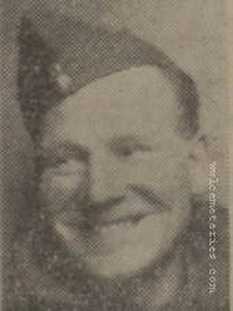
101689 Private
Clifford Parker
42 Coy. Aux. Mil. Pioneer Corps
27th May 1940, aged 33.
Plot 2. Row 14. Grave 7.
Son of Mr. and Mrs. Frederick William Parker; husband of L. A. R. Parker, of Derby.
Clifford Parker
42 Coy. Aux. Mil. Pioneer Corps
27th May 1940, aged 33.
Plot 2. Row 14. Grave 7.
Son of Mr. and Mrs. Frederick William Parker; husband of L. A. R. Parker, of Derby.
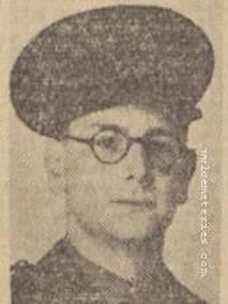
124862 Second Lieutenant
Bruce Arthur Richardson
9th Bn. Sherwood Foresters (Notts and Derby Regiment)
27th May 1940, aged 21.
Plot 2. Row 6. Grave 38.
Son of John Robert Richardson, and of Nellie Richardson, of Kensington, London.
Bruce Arthur Richardson
9th Bn. Sherwood Foresters (Notts and Derby Regiment)
27th May 1940, aged 21.
Plot 2. Row 6. Grave 38.
Son of John Robert Richardson, and of Nellie Richardson, of Kensington, London.

